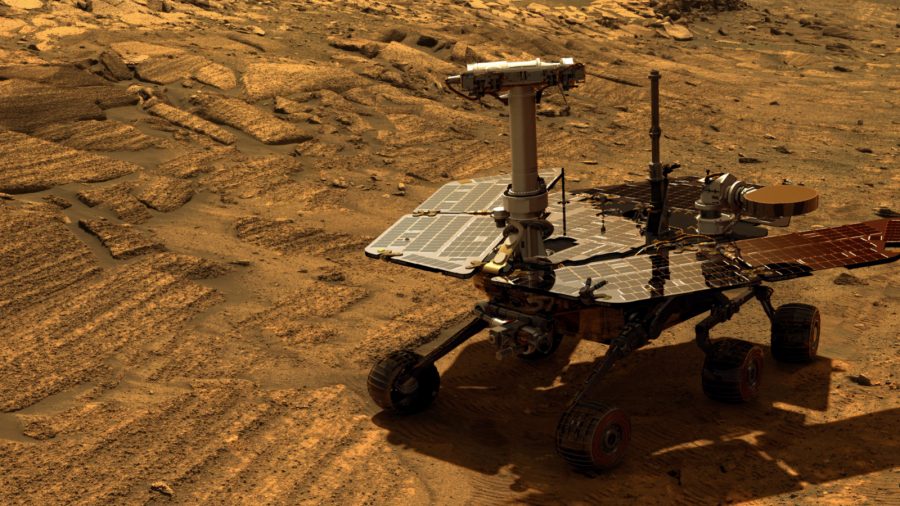NASA’s Opportunity Mars Rover is ready for the last two years of its mission after it spent the month of October studying the rich and familiar geology at the Wharton Ridge on the western rim of Endeavour Crater.
The two-year extended mission that began on October 1 will drive the Opportunity down a gully carved many time ago by a fluid that could have been water. The probe should take samples and photos at the spot and send them back to operation control.
Next, Opportunity will explore the insides of the Endeavour Crater, and it will become the first probe ever to see the interior of Mars’ cavities. The probe should compare the rocks inside the crater to the dominant type of rock it found on the plains it explored before.
The next destination, the gully, is as long as two football fields
The ditch goes west-to-east through the rim about half a mile south of the rover’s current location. Opportunity’s Principal Investigator Steve Squyres of Cornell University believes the fluid that covers the gully was water millions of years ago.
NASA knows about fluid-covered gullies since it began watching Mars from orbit on the 1970s, but this is going to be the first mission to examine the fluid up close on the surface. The team wants to drive Opportunity down the entire gully and onto the crater floor. The last goal of the extended mission is to compare the rocks inside Endeavour Crater with the rocks on the surface to see if there are traces of water.


The Endeavor Crater mission
The probe’s latest and probably most important expedition will begin in the Bitterroot Valley portion in the western rim of the Endeavour Crater. It is a 14 miles diameter basin that was created by a meteor impact billions of years ago.
The vessel reached the edge of the crater in 2011 after more than seven years investigating a series of smaller holes. In those places, the rover found evidence of ancient acidic water that went to underground layers and could have been on the surface before.
The longest-active probe on Mars
The mission of the already longest-active NASA probe is set to last 12 years, and no Mars rover has done that before. Opportunity’s prime mission started in April 2004, and its original purpose was of 90 Martian days, which is equivalent to 92.4 Earth days.
Opportunity Project Manager John Callas of NASA’s Jet Propulsion Laboratory explains the probe has exceeded the prime mission duration by a factor of 50.
Opportunity’s twin, Spirit, lost two of its six wheels before falling to the cold of its fourth Martian winter in 2010. Opportunity will face its eighth winter in 2017.
Source: NASA


